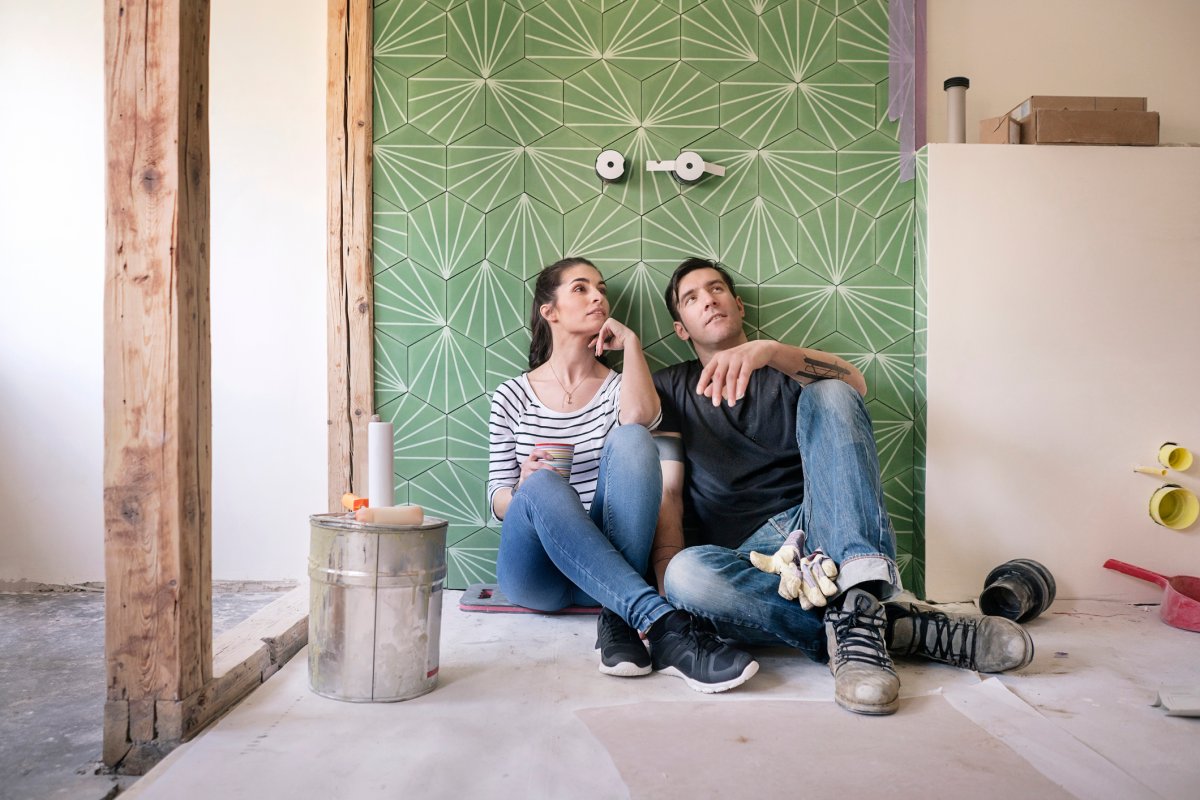There are more than 9.5 million homeowners in Canada. Of that population, roughly half plan to undergo some sort of home renovation in 2019, a CIBC poll shows.

But whether it be basic maintenance or major upgrades to bathrooms, kitchens, or gardens, research shows that Canadians are also looking to spend less on these projects.
One surefire way to avoid costly labour charges is to go the DIY route, tackling household projects and renos yourself.
“It’s savings in the thousands,” says Mike Di Donato, director of Skilled Trades College of Canada.
In conjunction with the Skilled Trades College of Canada and the newly launched Intro to Home Renovation Program, we explore home renovations you can actually (and probably should) do on your own.
Create a feature wall
Open-concept living is trendy, but the jury is still out on whether buyers will be interested in that type of floor plan in the future. To that end, knocking down walls and opening up your space without an engineer and a team of professionals is never a good idea, says Ralph Cerasuolo, president of Skilled Trades College of Canada.
Instead, look to create an eye-catching feature wall that adds instant warmth and design. Removable wallpaper or a bold splash of paint add instant personality. Learning to apply simple wainscoting can also add texture and depth to any room.
“YouTube is a great resource because, let’s face it, everybody uses it,” Cerasuolo says. “But you’ve got to really do your homework.”

Get daily National news
Update your kitchen
The kitchen is the heart of the home, so it makes sense to spruce up the space. However, kitchen renovations are among the most costly—last year, the average kitchen renovation in Canada cost roughly $25,500, with new cabinets and countertops coming in at more than $7,000 alone.
Sometimes a fresh coat of paint can give those cabinets a second life. You can also switch out the hardware for a whole new look.
Meanwhile, applying a new backsplash sounds complicated but is absolutely something a homeowner can tackle, says Cerasuolo.
“That’s a real easy one for sure, it’s not an overly complicated job,” he says. “But first consult professionals, go online and really see what you’re up against so you don’t put yourself in a bad place.”
Freshen up powder rooms and bathrooms
According to research, 36 per cent of Canadians planning a home renovation want to tackle the bathroom first.
In terms of tackling scary electrical work or plumbing, Di Donato maintains you should leave those trades to the pros. However, simple things like changing fixtures, toilets, and vanities aren’t just instant ways to freshen up the space, they’re things an average homeowner can achieve without having to call the pros.
Install new floors
Updating hardwood floors, tearing up carpet and laying down laminate or tile doesn’t just add to the overall design of your home, new hardwood flooring can also increase the resale value of your property by about 2.5 per cent. However, it’s important to ensure that everything is done properly, from start to finish.
“Flooring can be a little more involved. It isn’t a huge challenge to overcome and it’s definitely something that DIYers tackle, but it all depends on what’s there prior,” Cerasuolo explains.
Patch and paint
In terms of DIY projects around the house, Di Donato says painting and patching are among the easiest for homeowners. The materials are readily available at hardware stores and neutral coloured walls, like light taupe in the living room or light blue in the bathroom can help bolster resale value.
“Drywall and patching and painting are usually things that people can do,” Di Donato says. “If you spill some paint, what’s the worst that can happen?”
Update the exterior
Windows, siding and new garage doors all add value to the home, however those projects are best left to professionals. Instead, a freshly painted garage or entrance door draws the eye and offers an instant refresh.
“Any time you tackle any type of home renovation—something simple or complicated, it doesn’t matter—you have to do a lot of homework,” Cerasuolo emphasizes. “Something simple that saves a few bucks could cost you a lot more in the end if you’re not prepared.”
That’s where the training offered at Skilled Trades College of Canada comes in handy. Part of the newly-created Intro to Home Renovation Program teaches students the basics of home renovation and the planning involved in the process.
“When you’re planning a renovation you need to know where to start,” Cerasuolo explains. “That’s a big part of the program. And the other part is that there’s the right thing and the wrong thing to do at each of those steps. It’s always about a plan and starting with a blueprint.”
The 12-week course is designed to make people to feel more confident in their renovation skills, but also expose them to potential career paths.
“We’re giving them the skillsets to be able to jump into a new career. There is demand from the industry, but people don’t know how to get into these jobs.”
For more information on the Intro to Home Renovation Program at Skilled Trades College of Canada, visit an open house today.



